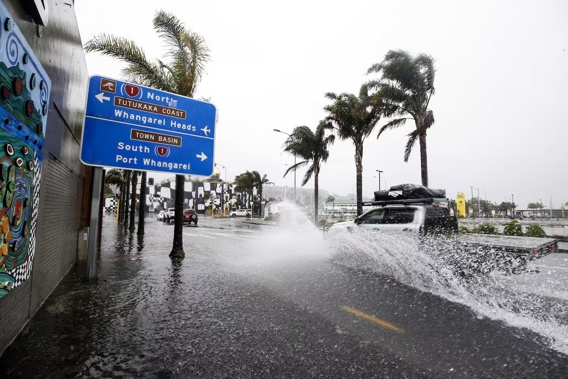
A new Niwa-led study has found climate change increased the amount of total rainfall during Cyclone Gabrielle by 10%.
The extra rain fell during the most intense parts of the storm, suggesting climate change had an amplified effect on the flooding that occurred.
This comes after the Treasury announced yesterday there was an 80% chance of another Cyclone Gabrielle in the next 50 years.
NIiwa climate scientist Dr Daithí Stone says if the world continues to warm at its present rate, these storm events are likely to become even more extreme.

A new Niwa-led study found climate change increased the amount of total rainfall during Cyclone Gabrielle.
“Cyclone Gabrielle resembled some of the worst-case scenarios that we could have predicted for the region. We therefore wanted to see how much climate change influenced its power, so we compared the actual MetService forecast of the storm against forecasts under conditions representative of a climate without human interference. Our study found a significant increase in rainfall under human-influenced conditions,” Stone said.
The team also looked at what might have happened if the world were even hotter than it is now, and found there would have been even more rain.
Since the industrial revolution, human-induced climate change has increased average global temperatures by at least 1.1C.
This has led to more intense storm events — a warmer atmosphere holds more moisture, which provides fuel for storms and increases wind speeds.
“Our findings resemble results from similar experiments looking at tropical cyclones elsewhere in the world, so it’s not something specific to New Zealand. The best way to tackle future storms is to reduce our greenhouse gas emissions to halt, or even reverse, the warming of our climate. But until then, Cyclone Gabrielle must form our new benchmark for preparing for any future natural disaster,” Stone said.
- Government offers an extra $4.55m for cyclone recovery in Hawke's Bay
- Study shows low health risk from Cyclone Gabrielle silt
- 'Lots of crying': Family reunited with cat missing after cyclone one year on
- 'I'll believe it when I see it': Residents doubt action will follow Cyclone Gabrielle report
- Cyclone review: Hawke's Bay Civil Defence staff told those concerned about flooding they were 'over-reacting'
- 'It's depressing': Gabrielle still hammering kiwifruit growers
MetService chief meteorologist Chris Noble said this research was vital.
Flooding during Cyclone Gabrielle was intensified by climate change, a Niwa-led study has found. Photo / Michale Cunningham
“The results of this study are incredibly helpful to quantify the influence of climate change on storms in Aotearoa New Zealand. We know the world is warming and the approach we’ve used gives unique insights into how quickly the severity of storms is increasing.
“Studies like this help the public understand climate change impacts here in New Zealand and may help inform policy and adaptation strategies in the future,” Noble said.
Cyclone Gabrielle formed in the Coral Sea and struck New Zealand’s northeast as an ex-tropical cyclone in February last year.
During the event, rainfall totals reached nearly 450mm, which is roughly a quarter of the usual amount in an entire year. Rainfall intensity peaked at nearly 40mm/hour in some places.
It was one of the worst natural disasters in New Zealand’s history, claiming the lives of 11 people and causing an estimated $13.5 billion of damage.
Take your Radio, Podcasts and Music with you









